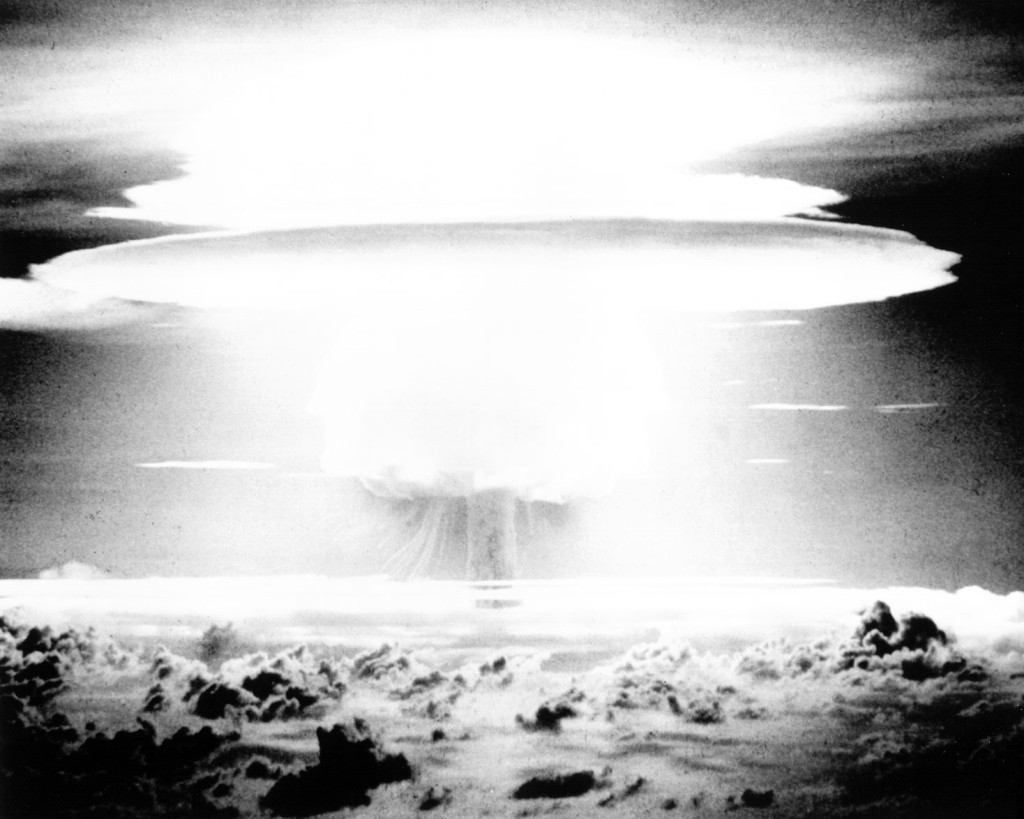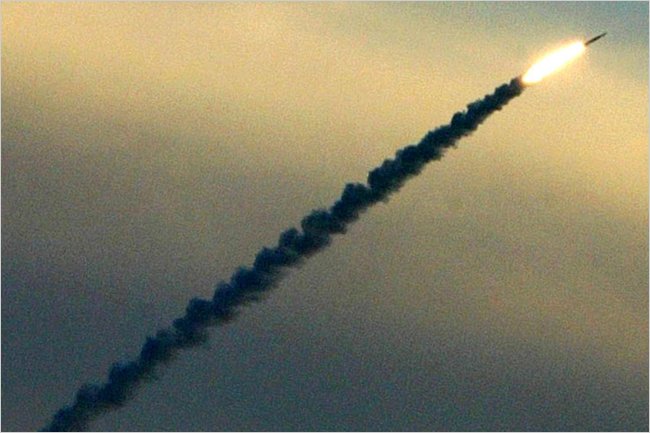Global Zero: Life without the Bomb?

Operation Castle, BRAVO Event - The BRAVO Event was an experimental thermonuclear device, 15-megaton weapons related surface event. Detonated 28 February 1954 on Bikini Atoll. Picture by Federal Government of the United States | Wikimedia Commons

Nuclear weapons: the single most awesome form of energy ever harnessed by mankind can be controlled and condensed into a metal capsule, capable, nay, designed to obliterate cities and civilizations that have come to existence over centuries of painstaking development in the blink of an eye. Human beings have largely managed to prevent their use, even in the most trying of times. Today, it appears that the risk of the use of nuclear weapons, once thought to be receding, is actually rising. Most recently, Vladimir Putin said the Ukraine crisis threatened Russia’s security. His solution? Nuclear weapons. Iran has made serious clandestine efforts to acquire them in the past, and despite the possibility of a nuclear deal with the P5+1, the Islamic Republic will always see nuclear weapons as appealing. Recent events in Libya and Ukraine are a lesson to others that forfeiting nuclear weapons works against one’s national security.
Nuclear weapons today are thousands of times more powerful than the awe-inspiring atomic bombs dropped on Hiroshima and Nagasaki in 1945. The world immediately understood the power of these devices; the Soviet Union pushed its intelligence service and scientists to produce a native bomb by 1949. For the next five decades, the issue of strategic nuclear balance became the central problem of international relations. Fear of strategic, tactical, and even accidental use of the most powerful weapon on earth preoccupied the minds of policymakers around the globe.
The steady buildup of deployed and non-deployed weapons raised a chilling question: what happens if one nuclear device is detonated? The deterrence strategy used by the United States and Russia during the Cold War meant that question never had to be answered. Known as Mutually Assured Destruction, or MAD, both nations threatened the total destruction of the other on the grounds of foreign policy “red lines.” With miscommunications and near-accidents not unheard of, the threat of nuclear apocalypse was not far from imaginable. When the Cold War abruptly ended with the fall of the Soviet Union, the role of nuclear weapons in strategic planning seemed antiquated and became a topic of serious debate.
The well-executed disarmament of nuclear stockpiles in Russia and the former Soviet republics served in part as inspiration for some to entertain the idea of a more expansive, world-wide disarmament: the complete removal of all nuclear weapons and development capabilities, or Global Zero. Its proponents promote a four phase plan that aims to create a nuclear-free world, with safeguards and inspection systems in place to prevent re-proliferation. They have captured the attention of world leaders and citizens around the globe by proposing a comprehensive plan to remove the specter of nuclear annihilation. The question is, is this feasible, or even desirable?
Stability in Unstable Times?
At first, the idea of a world without nuclear weapons seems ideal. Without them the possibility of accidents or other negative outcomes seems to disappear. But if we analyze the policy carefully, at best, Global Zero perpetuates or exacerbates conventional conflict; at worst, it provokes nuclear engagement. Supposing the removal of all nuclear weapons is done successfully and peacefully, monitoring and enforcing the policy is impossible, especially during times of conflict.
The process of total disarmament is markedly different from the reductions that have taken place thus far. The cutback of nuclear arsenals, undertaken by the United States and Russia beginning with the Non-Proliferation Treaty of 1968, served to dispose of excess weapons from the Cold War era. In other words, the goal was to get rid of the superfluous nukes. The signing of the new Strategic Arms Reduction Treaty (START) in 2009 continued the philosophy that nuclear weapons are vital to national security. The more serious cuts envisioned in Global Zero, which were absent from START, would sooner or later lead to the forfeit of second-strike capability. Disarmament to below 1,000 warheads and 500 deployed launchers will open a window to preemptively strike an opponent without fear of nuclear retribution. Contrary to most people’s belief, the inability to respond with a nuclear attack, in other words, to assure mutual destruction (MAD), destabilizes geopolitical calculations and could lead to an extreme and detrimental outcome: actual employment of nuclear weapons by two (or more) countries. The possibility of this outcome is only one of the flaws with Global Zero.

Intractable Breakout Capabilities
The end game of Global Zero is not inherently safer and could in fact be more dangerous. Wars have been fought before and during the nuclear era, so there is no reason to believe they will not be fought after. In a Foreign Affairs article, Joffe and Davis identify the destabilizing effects of disarmament, especially for countries involved in an asymmetric balance of conventional power. The Israeli/Arab/Iranian conflict and the India/Pakistan tension are two conflicts that are more likely to turn into total regional war when nuclear deterrence is removed. History has shown that the country with the superior force will inevitably subdue its adversary, by all means necessary.
Global Zero creates unintended incentives. A world free from nuclear weapons rewards the first country to procure them. The drop of the bomb at the end of World War II defined the primacy of a nuclear state in a non-nuclear world. When the Soviets acquired the bomb, the risk for the United States to use it (again) became prohibitive. In the Global Zero world, the first to use nuclear weapons would be internationally condemned, perhaps for as long as a half-century. However, as evidenced by the stamina of North Korea, concerted condemnation does not necessarily entail demise. Between nuclear destruction and isolation, it is clear how leaders could make the choice.
Nuclear weapons remove the threat of conventional war. The technology and knowledge will never cease to exist, so in a nuclear-free world, Joffe and Davis argue, every country will have a system to fast-track nuclear procurement so as to head off domination by other states. It’s not difficult to imagine that a country overwhelmed by the conventional forces of its adversary would resort to procurement. This, in turn, would effectively restart the nuclear arms race of the Cold War, but as discussed, there is no guarantee it would play out the same.
Even if Global Zero was desirable, it is so far from having a practical design that it should not be considered as a policy. At present the world does not have the ability to incentivize or coerce states who decided not to participate in the Global Zero campaign. It is simply impossible to design a system that will successfully monitor and enforce such a policy across the globe with no risk of missing clandestine development. Hiding fissile material and delivery mechanisms has proven to be a successful strategy to reaching the bomb before the international community is aware: India, Pakistan and North Korea were able to conceal facilities—and in some cases stood to gain from giving the world a limited showing of their developments. A Global Zero world would incentivize clandestine capabilities to a much greater degree. It is hard to imagine the United States, Russia, or China having difficulty obfuscating facilities.
Global Zero is a destabilizing policy. The process of disarming increases the probability of preemptive nuclear strikes. Even if the world disarms successfully, countries that once used nuclear deterrence will be ill-equipped to counter aggressive countries with superior conventional forces. There will be nothing stopping countries from redeveloping nuclear weapons; no guarantee that a second round of procurement will be as peaceful as the first. Total war becomes much more likely than it had been when a nuclear umbrella was in place.
M.A. Candidate, Politics




